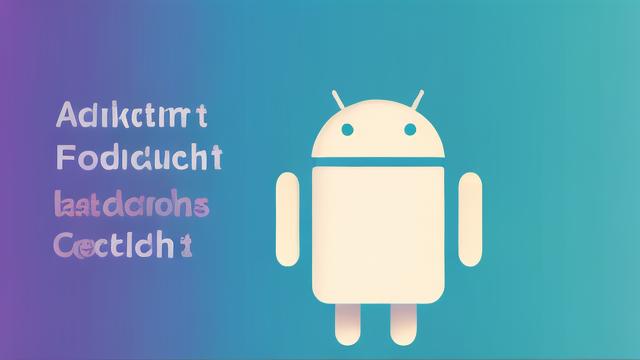Android延迟实现的几种解决方法及原理分析

在Android开发过程中,我们经常会遇到需要延时执行某些操作的场景,启动应用时先显示一个引导页面,过几秒后自动跳转到主界面;或者定时刷新数据、定时任务等,本文将详细探讨几种常见的Android延迟执行方法及其实现原理,帮助开发者选择最适合的延迟执行策略。
java.util.Timer类
使用方法
java.util.Timer 类提供了计划在将来某一时刻执行的任务的能力,通过schedule(TimerTask task, long delay) 方法,可以在指定的延迟后执行一个TimerTask。TimerTask 是一个抽象类,需要继承并重写其run() 方法来定义要执行的任务。
Timer timer = new Timer();
timer.schedule(new TimerTask() {
@Override
public void run() {
// 要执行的任务
}
}, 3000); // 3秒后执行实现原理
Timer 的实现是通过内部开启一个TimerThread,该线程不断检查任务队列,并在合适的时间执行任务,以下是TimerThread 的核心逻辑:
private void mainLoop() {
while (true) {
try {
TimerTask task;
boolean taskFired;
synchronized(queue) {
while (queue.isEmpty() && newTasksMayBeScheduled) {
queue.wait();
}
if (queue.isEmpty()) {
break;
}
task = queue.getMin();
synchronized(task.lock) {
if (task.state == TimerTask.CANCELLED) {
queue.removeMin();
continue;
}
currentTime = System.currentTimeMillis();
executionTime = task.nextExecutionTime;
if (taskFired = (executionTime <= currentTime)) {
if (task.period == 0) {
queue.removeMin();
task.state = TimerTask.EXECUTED;
} else {
queue.rescheduleMin(task.period < 0 ? currentTime task.period : executionTime + task.period);
}
}
}
if (!taskFired) {
queue.wait(executionTime currentTime);
}
}
} catch (InterruptedException e) {
}
}
}优缺点分析
优点: 简单易用,适用于轻量级任务。

缺点:Timer 在后台线程运行,如果任务执行时间过长,可能会影响主线程的响应性。Timer 不支持精确的时间调度,存在延迟执行的问题。
2. android.os.Handler类
使用方法
Handler 是Android中处理消息和回调的机制,可以用来实现延迟执行,通过postDelayed(Runnable r, long delayMillis) 方法,在指定的毫秒数后执行传入的Runnable 对象。
Handler handler = new Handler(Looper.getMainLooper());
handler.postDelayed(new Runnable() {
@Override
public void run() {
// 要执行的任务
}
}, 3000); // 3秒后执行实现原理
Handler 通常与Looper 配合使用,Looper 在主线程中循环处理消息队列。postDelayed 方法实际上是将一个消息放入消息队列,当延迟时间到达后,Looper 从消息队列中取出并执行该消息。
MessageQueue queue = Looper.myQueue();
synchronized (queue) {
final long when = SystemClock.uptimeMillis() + delayMillis;
Message msg = Message.obtain();
msg.markInUse(msg, when, msg);
msg.setAsynchronous(true);
return queue.enqueueMessage(msg, delayMillis);
}优缺点分析

优点:Handler 适合处理与UI相关的延迟任务,因为其任务在主线程中运行,可以避免线程切换带来的性能损耗。
缺点: 如果延迟时间过长,可能会导致消息队列中积压过多的消息,影响应用的性能和响应速度。
3. android.app.AlarmManager类
使用方法
AlarmManager 是系统服务,用于安排在未来的某个精确时间触发的事件,通过set() 方法设定定时任务,参数包括触发时间、窗口时间和间隔时间。
AlarmManager alarmManager = (AlarmManager) getSystemService(Context.ALARM_SERVICE); Intent intent = new Intent(this, MyBroadcastReceiver.class); PendingIntent pendingIntent = PendingIntent.getBroadcast(this, 0, intent, 0); alarmManager.set(AlarmManager.RTC_WAKEUP, 3000, pendingIntent); // 3秒后执行
实现原理
AlarmManager 会在设定的时间点唤醒设备或执行任务,即使设备处于休眠状态,它通过系统级的定时机制,确保任务在指定时间被准确触发。
void setImpl(int type, long triggerAtMillis, long windowMillis, long intervalMillis, int repeats, PendingIntent operation, OnAlarmListener listener, Handler targetHandler, WorkSource workSource) {
if (triggerAtMillis < System.currentTimeMillis()) {
triggerAtMillis = System.currentTimeMillis();
}
Alarm alarm = new Alarm(type, triggerAtMillis, windowMillis, intervalMillis, repeats, operation, listener, targetHandler, workSource);
addAlarmLocked(alarm);
}优缺点分析
优点: 高精度和节能的执行方式,尤其适用于需要长时间等待或需要唤醒设备的情况,如设置闹钟、定期更新应用数据等。
缺点: 需要特定权限,且频繁使用会影响电池寿命,因此在电池管理严格的场景下要谨慎使用。
4. Thread.sleep()然后在一定时间之后再执行想执行的代码
使用方法
通过新建一个线程,并在其中调用Thread.sleep() 方法使线程休眠指定的时间,然后在休眠结束后执行任务。
new Thread(new Runnable() {
@Override
public void run() {
try {
Thread.sleep(3000); // 休眠3秒
doTask(); // 执行任务
} catch (InterruptedException e) {
e.printStackTrace();
}
}
}).start();实现原理
Thread.sleep() 方法会使当前线程进入阻塞状态,直到指定的时间过去后再恢复执行,该方法会抛出InterruptedException,因此需要在代码中进行捕获处理。
public void sleep(long millis) throws InterruptedException {
long endTime = System.currentTimeMillis() + millis;
while (System.currentTimeMillis() < endTime) {
wait(endTime System.currentTimeMillis());
}
}优缺点分析
优点: 简单直接,适用于短时间的延迟执行。
缺点: 阻塞当前线程,可能导致UI响应变慢,不推荐在主线程中使用,如果延迟时间过长,会影响应用的流畅度和用户体验。
不同的延迟执行方法各有优缺点,适用于不同的应用场景:
java.util.Timer 适用于轻量级任务,但不适合精确时间调度。
android.os.Handler 适合处理与UI相关的延迟任务,但在延迟时间较长时需谨慎使用。
android.app.AlarmManager 适用于需要高精度或跨进程的定时任务,但频繁使用会影响电池寿命。
Thread.sleep() 简单直接,但会阻塞当前线程,不推荐在主线程中使用。
在实际开发中,应根据具体需求选择合适的延迟执行策略,避免不必要的资源消耗和性能问题,理解这些方法的工作原理对于优化应用性能和用户体验至关重要。
以上就是关于“Android延迟实现的几种解决方法及原理分析”的问题,朋友们可以点击主页了解更多内容,希望可以够帮助大家!